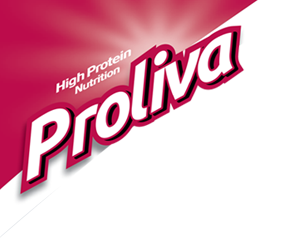-
Your Protein Powder Might Be Contaminated with Toxins, According to New Study | Shape Magazine
28.02.2018Most people incorporate vitamins or nutritional supplements into their diet to enhance their health. But if you regularly consume protein powder, you may want to reconsider the possible risks coming with your protein boost: A new study shows that 53 of 134 of the top-selling protein powders have substantially elevated levels of lead, mercury, arsenic, cadmium, and BPA.
The study was commissioned and released by the Clean Label Project, a Denver-based nonprofit dedicated to educating the public about the toxins and nutritional value in consumer products, but conducted by independent third-party analytical chemistry lab Ellipse Analytics. They selected 134 of the top protein powders on the market (using Amazon best-seller lists, Nielsen data, and social buzz) and tested them for over 130 contaminants, including heavy metals (arsenic, cadmium, lead, and mercury), over 100 pesticides, BPA/BPS (plasticizers that are known endocrine disruptors), and antibiotics residues.
The results aren’t so great. They found that about 75 percent of the protein powders tested had measurable levels of lead, 55 percent had measurable levels of BPA, and that 28 of the 134 contained twice the regulatory limit (three micrograms) of BPA. One protein power contained more than 25 times the allowed regulatory limit of BPA in one serving.
And while plant-based diets and plant-based protein might be gaining popularity, these types of protein powder scored higher for scary stuff. In the study, plant-based protein powders contained on average twice the amount of lead per serving compared to other products and also contained mercury, cadmium, and arsenic (in several cases above health-based guidelines). (Consider these plant-based food sources of protein instead.)
Think an “organic” label will save you? Not so fast. While organic may be a plus when you’re shopping for produce, the certified organic products tested averaged twice as much heavy metal content versus non-organic products. However, organic products did contain 40 percent less BPA than non-organic powders.
But how does all that junk get in there? Contaminants can find their way into the product as a result of both sourcing and production practices, according to the Clean Label Project. For example, contaminants can be found in soils (because of pesticides and mining run-off) and can be absorbed into plants just like nutrients. They can also be the result of the manufacturing process; for example, if BPA/BPS is used the lining of cans and containers, it can leach into the protein powder. (Just like many plastic water bottles, food cans, and other plastics containers.)
While there’s a lot of bad news here, the good news is that some protein powder brands scored pretty well. The top five proteins, according to the Clean Label Project study, include the vanilla whey flavor of Puori, BioChem, BodyFortress, Performix, and Pure Protein brand protein powders. Egg-based proteins were also found to be relatively cleaner than other protein sources. (Also see: The best protein powders, according to nutritionists.)
Wondering how your favorite brand or flavor stacks up? You can search their protein powder rankings. (And if it ranks poorly, consider tossing it with these other superfood supplements dietitians say you don’t need.)

Source: Your Protein Powder Might Be Contaminated with Toxins, According to New Study | Shape Magazine
Latest Blog Post
- Sugary Drinks Linked to a Higher Cancer Risk
- The Latest Research on Protein and Muscle-Building
- 27 Health and Nutrition Tips That Are Actually Evidence-Based
- Tall order: More to good growth in toddlers than just measurements
- Millions of cardiovascular deaths attributed to not eating enough fruits and vegetables

